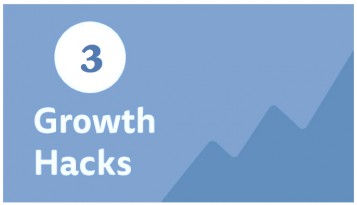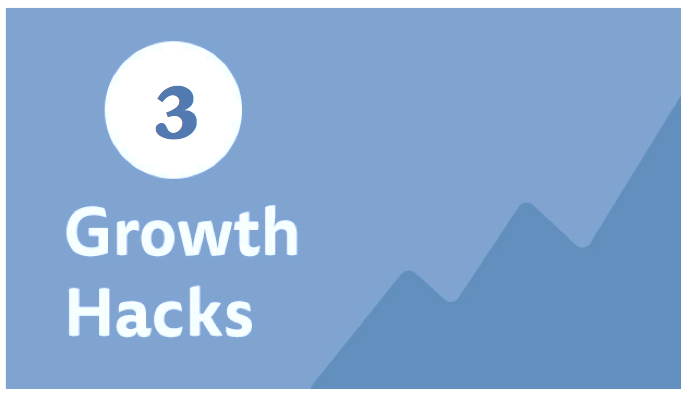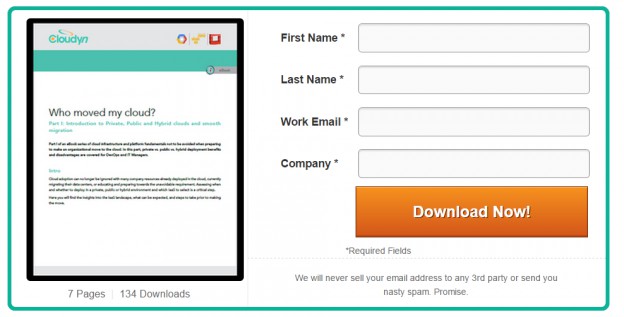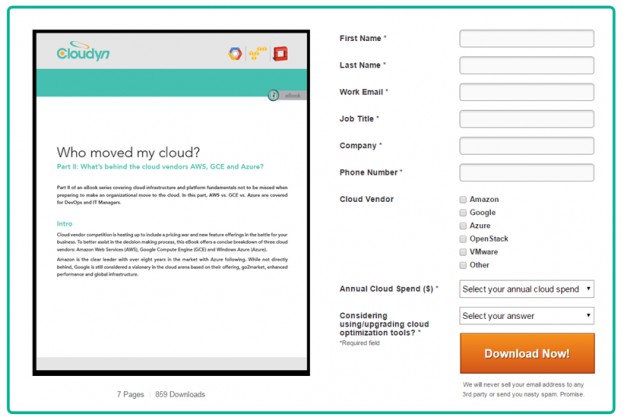 Popular belief often leads us to think that simply creating quality content and posting it online (including social media outlets) makes for a good content marketing strategy. In reality, however, that is nowhere near enough. Combining outlets and orchestrating them with the right insights, along with clever money investment, and fully leveraging marketing software, makes for a real marketing strategy, with proven success of fully leveraging content for marketing needs.
Popular belief often leads us to think that simply creating quality content and posting it online (including social media outlets) makes for a good content marketing strategy. In reality, however, that is nowhere near enough. Combining outlets and orchestrating them with the right insights, along with clever money investment, and fully leveraging marketing software, makes for a real marketing strategy, with proven success of fully leveraging content for marketing needs.
This article will break down some of the myths surrounding content marketing and give you the knowledge to effectively growth hack content to the highest conversion rate possible. The successful marketing campaign for Cloudyn that was led by Cloudyn’s VP Marketing, Ophir Shalitin, and Cookie Jar Marketing will be used as a case study, showing how they managed to take content and turn it into revenue. (Disclaimer: Cloudyn is an IamOnDemand Customer)
First of all, and as most of you already know, a good inbound marketing strategy starts with the idea of educating your buyer persona. Give something useful to those who have already shown interest in your product or industry and grab the attention of those who have not yet discovered it. Answer their questions via a helpful blog post, host a webinar, write a detailed eBook, etc. Creating quality, useful and enlightened content is important, especially for SEO, but that really shouldn’t be it. You want to take full leverage of every piece of content, to maximize your ROI, straight away, and not just rely on the long term benefits of SEO.
Breaking Myths
Effective content marketing is not “ninja”,“guerilla” or any other buzzword that describes “free marketing”, and it’s definitely not growth hacking. Many believe that writing content is a form of free marketing, making them ‘growth hackers’ by trade because they rely fully on content for their marketing efforts, which is essentially ‘free to create’. Truth is, investing hours researching, writing, editing and publishing is worth a lot of money. Also, there’s no hack in compelling content. Sorry guys, but outstanding content is not scalable.
When I led growth at the content creation platform, Playbuzz, a website currently boasting 80M monthly visitors, we found that the time invested in creating content is only scalable when you empower your community to create the content for you. When looking at growth hacking, always ask yourself if you can repeat this successful process again and again. With the right tools and R&D, you can make it happen – there’s a potential growth engine in front of you.
Another common belief among several startup marketers is that investing money means that by definition you are not growing organically, therefore you’re not scalable. That is obviously not true. Time means money. Why refuse to maximize your reach and speed up the process? You can blog three times a week, taking up a large chunk of time, or you can blog once but go the extra mile to maximize your post’s lead generation potential. You do the math.
The bottom line is: If you are not getting marketing qualified leads down the funnel then your content marketing efforts are not ROI positive. This means that you could be barking up the wrong tree and need to concentrate your endeavours more specifically in the right context.
Step 1: Acquiring the Traffic
So you’ve crafted a wonderful ebook, and it’s time to take it to the market. But how? If you’re a B2B tech company, it is likely that your personas are avid Linkedin users. Linkedin Ads, even with its frustrating UI, has targeting options that surpass Facebook, Twitter and Google by enabling role and skill based targeting. It also allows advertisers to target members of specific Linkedin groups, which serve as forums in this giant network. For this campaign, Linkedin sponsored updates were mainly used, in order to target those within the cloud space. The highly targeted, narrow audience allowed Cloudyn to filter through irrelevant potential clients right from the get go.
Step 2: Let’s Get Intrusive
Many believe that asking intrusive questions on the landing page puts people off, and marketers would expect a decline in conversion rate with each added field. But that’s not always the case. Especially not with content. Take a look at these two versions of a landing page for Cloudyn and guess which form had a higher conversion rate:
In the first form there are only a few fields to fill in, taking minimal time and effort to complete, allowing the visitor to efficiently progress on to the next stage. Visitors probably won’t think twice about filling it in as it really doesn’t require too much trouble or thought processing. The problem here was, that Cloudyn couldn’t really tell the quality of the leads generated from this campaign, as the information gathered from the form wasn’t in-depth enough. That was when Cookie Jar & Cloudyn decided to add 5 more fields to the form, since the aim was to get more qualified leads, taking into consideration that this will probably cause a decrease in conversion rate.
As you can see, the second form is more inquisitive in nature and features a more “in your face” visual. Digging for more information from customers by asking about their job title, cloud vendor and cloud optimization considerations can be viewed as intrusive by some and requires more time and effort to answer. You might assume that they would think twice before starting to fill it in.
Results of subdued form:

Results of intrusive form:
You would actually be wrong. As you can see from the conversion rate statistics, the intrusive form (20.54% conversion rate) was twice as successful as the subdued form (10.7% conversion rate). Just for reference…the industry standard landing page conversion rate is 2%, and the average white paper return rate is 5%-6%.
In the use case above, people responded positively to being asked more personal questions such as job title, cloud vendor and cloud optimization considerations. This could be due to the fact that by asking more, Cloudyn came across more serious, making the page visitor feel more respected and valued as a potential customer.
Now Cloudyn has a database full of extremely valuable information about the clients that they can use in further marketing efforts. This is also a simple way to fish out the serious clients from more casual ones. For example, if someone filled in their annual spend on cloud services as $5 million, you know straight away that they are big players and will transfer their account on to a relevant department to be taken care of. It also appears that a larger visual creates more positive results.
Step 3: Closing the Loop With A Personalized Follow Up
Collecting all that personal information wasn’t simply for lead ranking purposes, and now is the time when automation comes into play. Sending a personalized, automatic follow up email via MailChimp is imperative for following up with leads and urging users to take the next step, saving valuable sales rep time. Take a look at this Cloudyn template that makes use of all of the information collected through the landing page form:

As you can see, the personalization doesn’t just stop at the name. Job title, company and annual cloud spend are all customized to show that Cloudyn understands the needs of the customer and has a solution for them. The open rate with this particular mail template was 55%, with 35% of the potential customers requesting further information.
Tools Used for This Campaign
If you’re looking to create this exact loop, it is crucial to use the right tools that will enable you to repeat that same process again and again for a scalable program. Here are the outlets that Cookie Jar Marketing used for this campaign with Cloudyn:
Unbounce – Build, publish and A/B test landing pages
LinkedIn Ads – Paid ads to speed up building traffic. Highly beneficial for B2B marketing. Ability to target audiences according to job title or sector.
Facebook Ads – Retargeting website visitors who are not already Cloudyn customers.
MailChimp – Manage contacts, send automated personalized emails and track results.
Writing content and projecting it onto the internet is simply not enough if you have tight marketing goals. If you are serious about converting content into leads, you will go the extra mile by investing money in the right channels and by being slightly bold with what you ask for.
Cookie Jar Marketing, IamOnDemand and Cloudyn’s marketing team are the brains behind this success story. Cookie Jar’s mission is to help startups with overall growth strategy and tactics. They do this by setting up unique lead generation funnels, make data-driven decisions about the right messaging and then build an optimized infrastructure to increase the number of paying customers.
About the Author
Jonathan Nimrodi
CEO and Head of Inbound Marketing at Cookie Jar, Israel’s best-in-class Growth Hacking firm, specializing in funnel creation, optimization, CRO & Social Media Management, Marketing, Advertising and Measurement.
Recently IamOnDemand content creation team and Cookie Jar Marketing partnered to help cloud, devops and security technology companies generate more qualified leads, spread the word and make them successful businesses. Contact us to learn more





